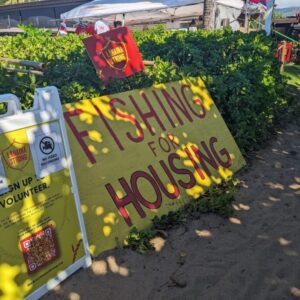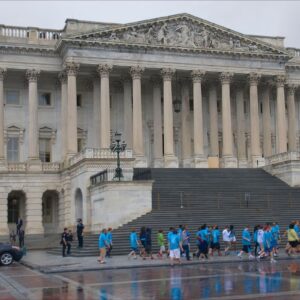
On Saturday, May 4, I received an email with a subject line that read: PROCESS Update: NOT GOOD. I did not want to open the email.
Around this time last year, a few of us professors at Northern Arizona University (NAU) had welcomed seven students into the PROCESS program as part of a Hispanic Serving Institution National Science Foundation Grant. The program brought scientists, writers, artists, and STEM students together to discuss how taking creative writing (which I teach) and art classes would encourage creativity in their research projects, help them hone communication skills, secure their interest in science across disciplines, and encourage these young people underrepresented in the sciences to identify as scientists.
Students spent five weeks of their summers collecting microorganisms from soil samples and studying plant morphology with Karen Haubensak, a field ecologist working at the interface of communities and ecosystems, examining plant–soil interactions in the context of restoration, biological invasions, and climate change. Students also worked with Javier Navarro, whose research focuses on the complexity of the host-associated and environmental microbiome, including viruses, bacteria, archaea, fungi, and protists.
In the afternoons, I taught the students in the grant program about fundamentals of creative writing, while my artist colleague, Neal Galloway, taught them about art and earthworks.
Their summer jobs, their housing, and their research experience had been canceled.
When I did finally open the email, I learned our $500,000 National Science Foundation (NSF) grant had been terminated, effective immediately. This year’s PROCESS cohort would end. Alison Singer, who teaches science writing for the Department of Biological Sciences at NAU and serves as the principal investigator on the grant, had already emailed the students to tell them their summer jobs, their housing, and their research experience had been canceled.
I felt shock. I wrote back, “I am so sorry to you all—you work so hard on this—to write the grant, to get it going, to communicate with us, to recruit students, find dorm housing.” All that work was now wasted. And the research—important research about fires and microorganisms and carbon sequestering—was out the window.
Wasted Promise
Grants are being canceled all over the place, at my own university and at many others. A colleague’s grant that supported Indigenous scholars working on permafrost melt in Alaska: gone. Another colleague’s grant from the National Endowment for the Humanities to support the teaching of Southwest American history: gone. A grant from the NSF about agrivoltaics, which involves installing solar panels above or between crops, allowing for simultaneous solar energy generation and agricultural activities: gone.
My fellow writers are circulating a spreadsheet, started by writer and theater director Annie Dorsen, to track how many grants from the National Endowment for the Arts (NEA) have been canceled. In one day, the spreadsheet recorded 222 canceled NEA grants, totaling over $6 million in lost funding. As of this writing, the spreadsheet now reports over $27 million in canceled arts funding.
As of this writing, the spreadsheet now reports over $27 million in canceled arts funding.
In Arizona alone, for every dollar spent on art, the state’s economy sees a significant return. Studies indicate that translates to a return of $3.08 for every $1 invested, according to the Arizona Commission on the Arts. Furthermore, the arts and culture sector in Arizona contributed $15.8 billion to the state’s economy in 2023.
But the benefit of the arts extends far beyond economic contributions. I posted on social media about our PROCESS grant getting canceled. A fellow writing professor commented, “I had a class of all STEM students last spring, mostly by coincidence. So interesting, and I think they’d attest to our pedagogy tickling their brains in novel and important ways.” My friend, an astronomer, wrote, “Scientist here. Back in my college days, I would’ve done anything to take a class like this. The value is obvious and inestimable. I think most, if not all, of my students over the years would have felt exactly as I do and leapt at the chance.”
The Art and Science Connection
Writing about science is hard. Writing about science creatively is extra hard. Figuring out how to write about big, complicated topics through specific strategies, used differently in different genres, is challenging. But it stretches your imagination, letting you exercise your brain as you experiment.
We studied Paolo Bacigalupi’s short story “The Tamarisk Hunter,” Robin Wall Kimmerer’s essay “The Teachings of Grass,” Linda Hogan’s poem “Innocence,” and a scientific article, “Not Just About the Trees: Key Role of Mosaic-Meadows in Restoration of Ponderosa Pine Ecosystems” by Megan Shanahan Matonis and Dan Binkley.
I discussed core writing concepts like plot, character, theme, point of view, conflict, climax, and resolution. It’s one thing to apply those core concepts of language usage and narrative to fiction and poetry, but it’s particularly challenging to discuss them in the context of nature essays, poems, and science articles because the terms don’t so easily fit.
We asked: How can we give science writing tension and forward motion? How can we infuse more scientific knowledge into our artful writing? In our age of climate change denial, can art and creative writing help more people understand and believe in the urgency of science?
As the students spent their days in the field, we continued to imagine how science and art inform each other. I explained how in my writing, I toggle between personal narrative and scientific research. For example, I recently wrote an essay that pairs brine shrimp in the Great Salt Lake with the story of my first pregnancy. By weaving back and forth between these threads, I hope to elicit new understanding of identity and the way the systems of thought operate.
My colleague Galloway presented art that was not only influenced by science but actually performed it, including Jason deCaires Taylor’s Vicissitudes, where the artist installed marine-safe concrete sculptures of humans holding hands at the bottom of the ocean, that, in the artist’s words, proposed “growth, chance, and natural transformation. It shows how time and environment impact on and shape the physical body.” Embedded on the sea floor, these structures have become habitats for sea life, like coral and sponges.
I think of all the skills and promise that will fall into that ravine.
Mark Dion’s exhibit called Neukom Vivarium showcases a nurse log—a fallen tree from which a new forest ecosystem grows. Encased in glass, this tree sprouts ferns, mushrooms, and all kinds of microbes. At some point, the new growth will shatter the glass.
And Revival Field is an installation by Mel Chin, where the artist planted trees in polluted soil, which drew toxins from the ground, to clean and repair the land.
These projects are at the intersection of art and science. The students were fascinated and inspired by the possibilities, and took their findings back to their own work. Their feedback from the first year ranged from “awesome” to “mind-blowing.”
What’s Next
In late April, we met this year’s incoming grant cohort for fall of 2025. The commitment of these students was palpable. Most were of Navajo or Latine heritage. Each of them would stay in college housing. They would work together. This grant would provide their summer income—most students who attend NAU hold jobs to pay for their education. With this grant, they would have been paid to learn, grow, and think, to come closer to reaching their potential as young scientists. We all left with clear goals—and a sense of community.
Then came the email.
Now these students—primarily students of color—must scramble to find other jobs and to secure housing. It’s uncertain if they will be available next summer in case we have a chance to try again. A whole year of science and art possibilities have gone to waste.
The whole point of our grant was to leap between disciplines, to leap between ideas. To jump forward into a future where creativity is celebrated in science, and research is celebrated in art and writing. I think of the gulf between the spring and fall semesters when we will no longer offer a springboard for our students to help them to the other side. I think of all the skills and potential that will fall into that ravine.
But I have hope that with enough pushback, some of these grants will be reinstated. The promise of these future scientists and artists must be allowed to flourish.
For More on This Topic:
The Emergency at the NEA Will Impact Arts Nonprofits














